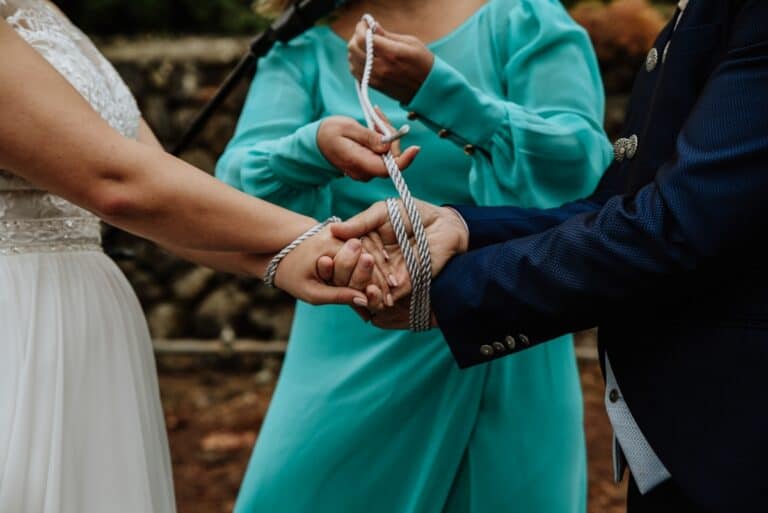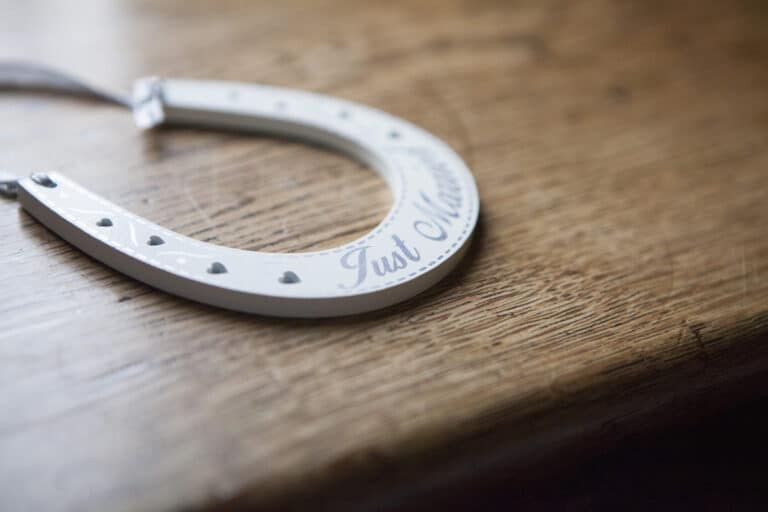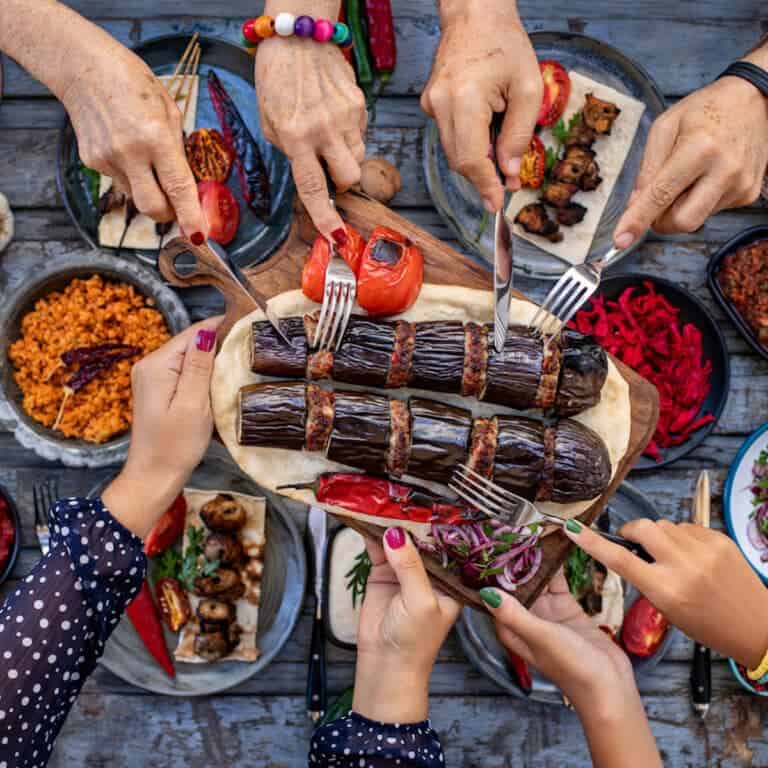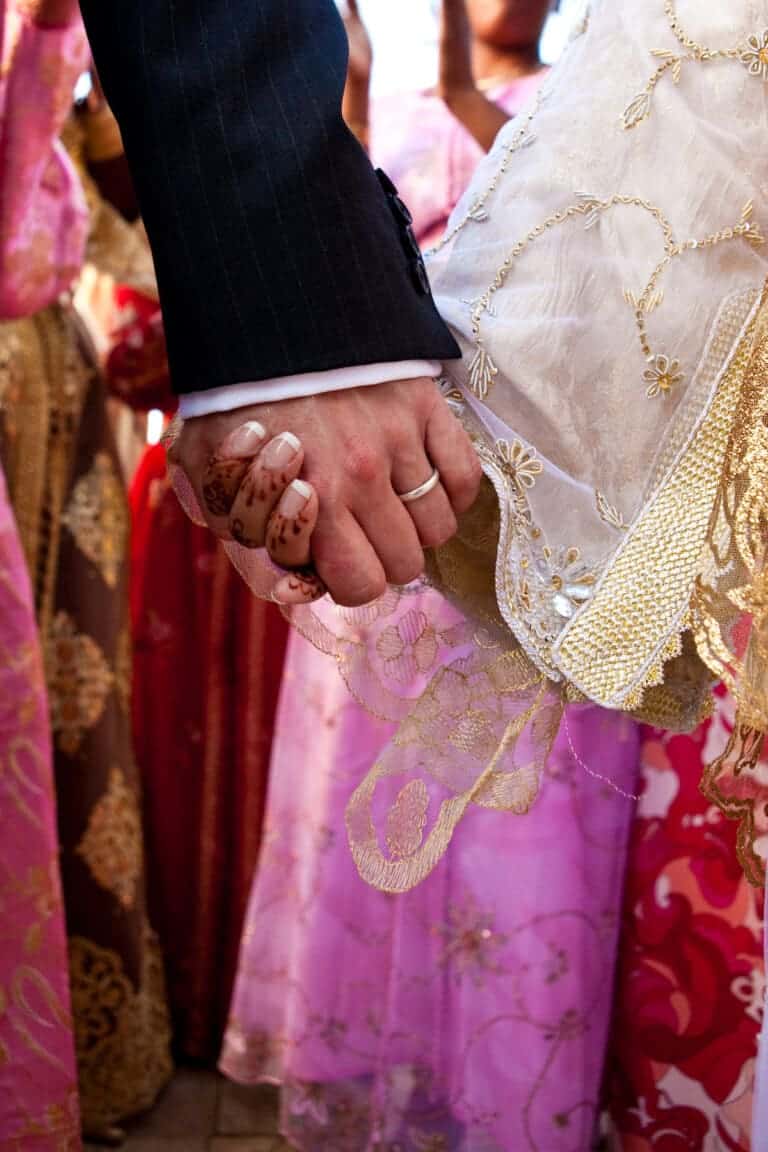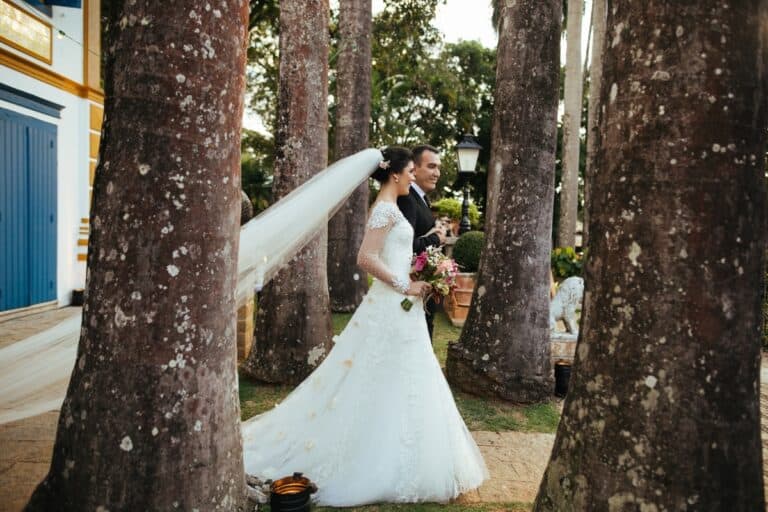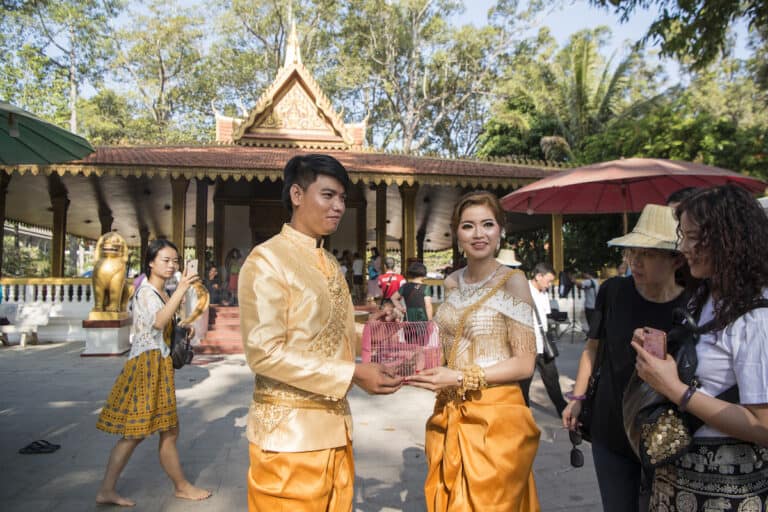A Peek Into 1960s Weddings
The 1960s were a time of remarkable change and innovation in fashion, music, and social norms. This period of creativity and experimentation extended into the world of bridal fashion, as well. As the decade progressed, the classic styles of the 1950s evolved. This gave way to the emergence of new and daring bridal trends.
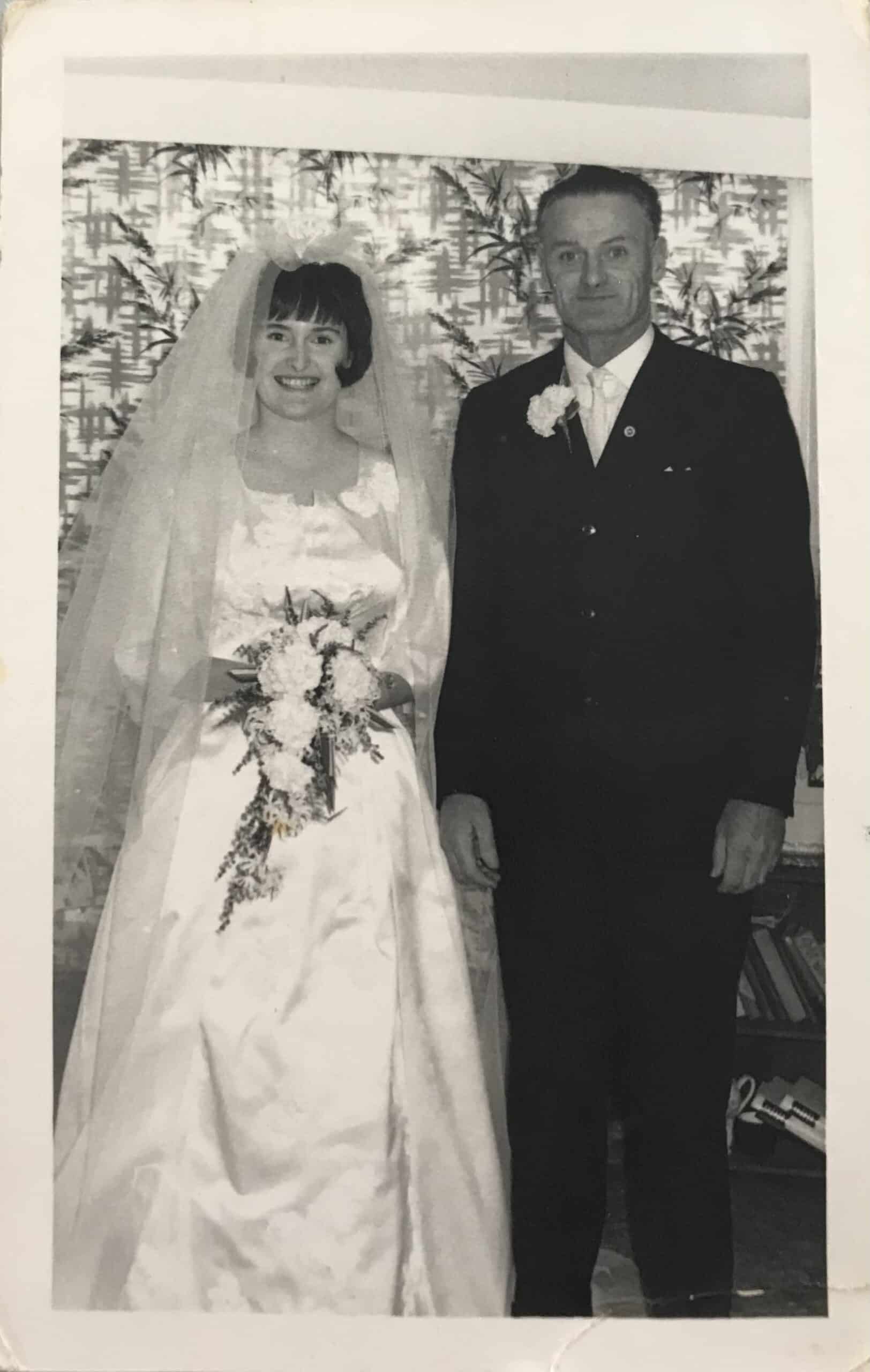
1960s Wedding Dress
The 1960s saw styles of blended classic refinement and elements of a new decade with unique fashion trends. The gorgeous A-line wedding dresses made popular in the 1950s weddings continued in popularity. Characterized by their fitted bodice and gently flared skirts, these silhouettes created a flattering, feminine shape. A popular choice in the 1960s and remains a timeless option for brides today.
Empire waist dresses, with a high waistline just below the bust and a flowing long skirt, were another popular style in the 1960s. This style appealed to brides looking for a romantic, ethereal look. This dress shape created a sense of lightness and movement.
Long-sleeved wedding dresses were a popular option in the early 1960s. Influenced by iconic brides like Jackie Kennedy and Grace Kelly in the 1950s. This popular sleeve style saw many brides opting for lace or sheer sleeves, adding elegance and sophistication to their gowns.

As the decade progressed, the stylish 60s saw the babydoll style gain popularity. These dresses had a high waistline, just like the empire waist dresses. However, they had much shorter hemlines, no longer than knee length, with a loose, flowy silhouette embodying a youthful and playful aesthetic. As times and fashion were changing, the long dress trend was becoming less of a must-have.
This meant brides had many options when selecting their perfect gown. Mini skirts emerged as popular choices for brides and bridesmaid dresses alike. This trend reflected the growing influence of the youth culture and the desire to break from tradition.
1960s Wedding Dress Inspiration
Early 1960s wedding dresses were characterized by their elegance and simplicity. Brides drew inspiration from iconic actresses like Grace Kelly, who married Prince Rainier of Monaco in 1956, and Jackie Kennedy, who married John F. Kennedy in 1953. These famous faces wore classic, long-sleeved dresses with full skirts of tulle or crinoline, creating a voluminous, princess-like effect. Another bridal influence of the 1960s was Princess Margaret. The princess opted to wear a more traditional style full-skirted gown with a tailored bodice and long sleeves.
Dior’s New Look silhouette was popularized in the 1950s. This style continued influencing bridal gowns in the early 1960s with its cinched waist, voluminous skirt, padded hips, and soft shoulders. Celebrity wedding gown designers like Oleg Cassini played a significant role in shaping 1960s bridal fashion. Cassini designed the iconic wedding dress Jackie Kennedy wore. He designed the two-piece suit for Ginger Rogers when she married her fifth husband, William Marshall, in 1961.
On the subject of multiple marriages, Elizabeth Taylor’s 1964 wedding to Richard Burton, her 5th of 8 total weddings, saw the use of bold colors with her canary yellow chiffon wedding dress. With its swooping neckline, this knee-length empire line silhouette added a soft contrast to the bright yellow dress.
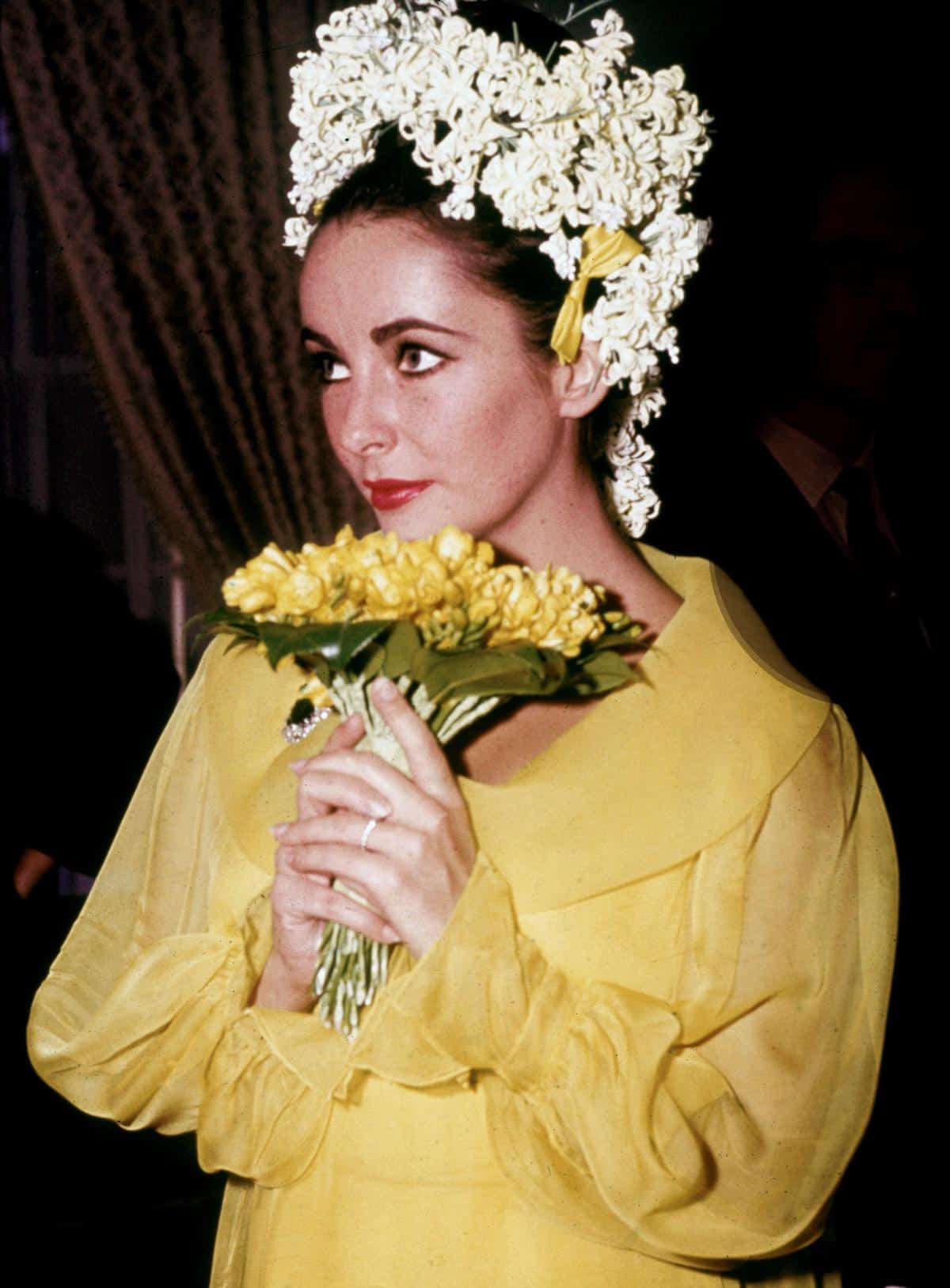
Priscilla Presley selected to wear an empire waist gown with long sleeves when she wed Elvis Presley in 1967.
Shorter hemlines
As the decade progressed, mod fashion began to make its mark on the wedding industry. Brides opted for more contemporary and daring styles. The “flower power” movement, celebrating peace, love, and individuality, impacted bridal fashion in the 1960s. Brides embraced the “flower child” aesthetic, opting for two-piece skirt suits, short empire waist dresses, and mini skirts. This style was influenced by Mia Farrow, who married Frank Sinatra in a simple, knee-length ivory skirt suit in 1966. Whereas Yoko Ono opted for a casual, individualistic look when she married John Lennon in 1969. Dawning a two-piece outfit with a layered mini skirt and knee-length socks.
Accessories
Veils and Hats
Veils were an essential accessory for brides in the 1960s and added an elegant and romantic touch to their wedding ensembles. Various fashion trends and cultural shifts influenced the veils of this era, resulting in a wide range of styles.
Many brides in the early 1960s wore pillbox hats with attached veils. This style was popularized by Jacqueline Kennedy, who wore a pillbox hat with a veil at her wedding in 1953. These veils were usually made of tulle or netting and covered the face or extended to the shoulders. Ginger Rogers wore a short veiled pillbox hat for her wedding day. This influenced many to continue this trend into the mid to late 60s. Moreen Cox, who married Ringo Star, opted for a pillbox hat with no veil in her small ceremony.
To complement the trendy bouffant hairstyle in the 1960s, brides often wore bouffant veils to complete their voluminous hairdos. These veils were typically made from multiple layers of tulle or netting, creating a full and dramatic effect. They were secured with a headpiece, such as a tiara, headband, or beaded crown.
For brides who preferred the shorter veil, birdcage veils were still prevalent in the 1960s. These veils were made from a single layer of netting or tulle and covered the face partially or entirely. Birdcage veils were attached to a small hat or hairpiece, such as a fascinator or decorative comb.
Fingertip veils were a versatile and popular choice. These veils extended to the fingertips or just past the elbows and were worn with various hairstyles. They often featured lace or beaded trims, adding a touch of elegance to the bridal ensemble.
Sleeves
Sleeves add a distinctive touch to wedding gowns. A variety of sleeve styles reflected the diverse fashion trends of the era.
The three-quarter length was popular, offering a modest yet elegant look. The sleeves typically ended between the elbow and the wrist and were often fitted or tapered. Three-quarter length sleeves were seen on various dress silhouettes, from A-line to empire waist dresses.
Long sleeves were common, particularly in the early part of the decade. They had a classic and modest appearance, often featuring lace or other embellishments. Popular on full-skirted and more fitted dress styles.
As the decade progressed and the influence of the bohemian and hippie movements grew, bell sleeves became increasingly popular. These sleeves flared out from the elbow or shoulder. Adding a romantic and dramatic touch to the gown. Bell sleeves were often seen on empire waist and babydoll dresses, embodying the free-spirited vibe of the late 1960s.
Gloves
Throughout to 60s, gloves were becoming less common. However, some brides, including Audrey Hepburn, continued this formality symbol. Gloves add an elegant and sophisticated touch to their wedding attire.
Wrist-length gloves were popular for brides, particularly those wearing short-sleeved or sleeveless wedding dresses. These gloves typically ended at the wrist or slightly above and were made from satin, lace, or sheer fabrics.
Whereas elbow-length gloves extended to the elbow and were often worn with short-sleeved or three-quarter-length sleeved dresses. These provided a more formal and traditional appearance and were made from various materials, including satin, lace, or silk.
Shoes
There were various fashion trends when it came to wedding shoes in the 1960s. Pumps, also known as court shoes, were popular for brides. These shoes featured a closed toe, a low-cut front, and a modest heel, making them a comfortable and classic option. Pumps were often made from satin, silk, or lace and were sometimes adorned with embellishments like bows, pearls, or rhinestones.
Kitten heels were a popular choice, offering a stylish and comfortable alternative to higher heels. They typically had a thin, delicate heel approximately 1 to 2 inches tall. These shoes could be found in various styles, such as slingbacks, peep-toes, or pumps, and were made from materials like satin or silk.
Ballet flats were popular for brides seeking a more comfortable and practical option. These shoes had a flat sole and a rounded toe, offering an elegant and understated look. Ballet flats were often made from satin or silk and sometimes featured embellishments like bows, pearls, or embroidery.
1960s Wedding Hairstyles
From elegant updos to free-spirited, bohemian styles, brides had many options for their wedding day look. With a wide variety of hairstyles, many chose styles to suit their personal preferences and hair length.
As mentioned earlier, the “bouffant” was a popular hairstyle in this era, characterized by a voluminous, rounded shape at the crown of the head. Brides often wore their bouffant with a veil or headpiece to secure the style. This hairstyle was versatile and could be worn with long and short hair.
The “beehive” was another iconic 1960s hairstyle featuring a tall, conical shape at the crown of the head. This style was achieved by backcombing the hair and securing it with hairspray and pins. The beehive could be worn with or without a veil, and brides often added decorative hair accessories, such as flowers or jeweled combs. Priscilla Presley’s beehive hairstyle for her wedding to Elvis shows off this iconic 60s style.
The “half-up, half-down” hairstyle was popular for brides seeking a more relaxed and romantic look. This style involved pulling back the top section of the hair and securing it at the back of the head, leaving the rest of the hair down and loose. Brides could incorporate curls, waves, or straight locks, depending on their preference.
Short hair gained popularity in the 1960s, with many brides opting for a chic pixie cut on their wedding day. American Actress Mia Farrow opted for a pixie cut on her wedding day to Frank Sinatra in 1966. This short, cropped hairstyle could be worn with a veil or headpiece or accessorized with a statement hair accessory, such as a jeweled headband or a flower.
Bouquets
In the 1960s, small bridal bouquets and corsages were popular in wedding floral arrangements. Bouquets often featured a few select flowers combined with minimum greenery and other accents. Many brides chose a toned-down bouquet of roses, lilies, blossoms, or carnations.
Wired and taped wedding corsages and bouquets were common in the 1960s. This technique involved attaching individual flowers and foliage to a wire and then wrapping the wire with florist tape to create a clean, polished look. Wired bouquets allowed for precise control over the arrangement, making it easier to create specific shapes and designs.
The mothers of the bride, groom, and bridesmaids often wore wired corsages. They were typically made of a small cluster of flowers and foliage and fastened to the wrist or lapel using a ribbon or pin.

Men’s attire
From the traditional elegance of morning suits and tuxedos to the contemporary appeal of mod suits and Nehru jackets, men’s attire was varied. While traditional styles remained popular, new and more contemporary designs also emerged.
While celebrities such as Elvis Presley doomed a black paisley tux – John Lennon made what he already owned work by choosing to wear a white jacket and a pair of corduroys.

Popular Male Wedding Attire
- Traditional Morning Suit: A classic and formal choice, this attire consisted of a tailcoat, a waistcoat, and striped trousers. Often accompanied by a crisp white shirt, a cravat or tie, and a pocket square. Black, charcoal, and navy were popular color choices for morning suits.
- Tuxedos: For evening weddings, tuxedos were a popular choice. The classic tuxedo featured a single-breasted jacket with peaked or shawl lapels. Tuxes were often black or navy, paired with a white dress shirt, a bow tie, and a cummerbund or waistcoat.
- Lounge Suits: Lounge suits became an increasingly popular choice for grooms. These suits were less formal than morning suits or tuxedos and worn for daytime or less traditional weddings. Lounge suits typically feature a single-breasted or double-breasted jacket, matching trousers, and a white or light-colored dress shirt.
- Mod Suits: Some grooms opted for more fashion-forward and contemporary suits. Mod suits were characterized by slim-fitting jackets, narrow lapels, and tapered trousers, often in bold or unconventional colors and patterns.
- Nehru Jackets: As cultural influences diversified, some grooms wore Nehru jackets inspired by Indian Prime Minister Jawaharlal Nehru. These jackets featured a mandarin collar and a single-breasted, button-up front.
- Accessories: Grooms often accessorized their wedding attire with items like cufflinks, pocket squares, boutonnieres, and ties or cravats. Traditional boutonnieres featured a single flower, such as a rose or a carnation.
Bridesmaids
Bridesmaid attire in the 1960s showcased a mix of traditional and contemporary styles. From elegant, formal gowns to more relaxed and youthful swinging 60s designs, bridesmaids had various options to complement the bride’s chosen theme and color scheme.
Popular styles included the A-line, empire waist, babydoll, and shift dresses. Many bridesmaid dresses featured vibrant colors, bold patterns, and embellishments like lace and bows. Pastels became popular during the early 1960s. As the trends changed, brides leaned towards more earthy tones for their bridesmaids. By the end of the ’60s, floral patterns were trending, and hemlines were becoming shorter.

Entertainment
The 1960s was a vibrant and exciting era for music and entertainment. Timeless tunes of famous artists ensured 1960s weddings were filled with fun, romance, and lasting memories for all who attended.
During significant cultural and musical changes, these influences were also felt in the world of weddings. From famous artists of the era to unique entertainment options, 1960s wedding music and celebrations were lively and memorable.
Music
The 1960s was a rich and diverse era for music, with many artists and genres gaining popularity. Some of the most famous artists and songs that made their way into wedding playlists are still classics played today, such as:
- The Beatles: The Fab Four were a dominant force in the 1960s music scene. With songs like “All You Need is Love” and “In My Life” becoming timeless classics for wedding celebrations.
- Frank Sinatra: As a symbol of timeless romance, Frank Sinatra’s smooth voice graced many wedding receptions with hits like “Fly Me to the Moon” and “The Way You Look Tonight.”
- Etta James: Etta James’ soulful rendition of “At Last” became an instant classic and a popular choice. A perfect choice for first dances and romantic moments during wedding receptions.
- The Temptations: This Motown group’s upbeat tunes, such as “My Girl” and “Ain’t Too Proud to Beg,” kept guests dancing and enjoying themselves throughout the night.
- Elvis Presley: The King of Rock ‘n’ Roll was still a popular choice for weddings in the 1960s. Hits like “Can’t Help Falling in Love” and “Love Me Tender” set the stage for romantic moments.
Dance
Dance styles and live bands playing hits from well-known artists set the tone for unforgettable wedding receptions in the 1960s. These timeless classics got guests of all ages out on the dance floor.
“The Twist,” which became a worldwide craze in the late 1950s, was popular well into the 60s. Characterized by its simple moves and playful nature, this iconic dance was accessible and enjoyable for guests of all ages.
Another dance craze of the early 1960s was the “Mashed Potato.” This dance involved shifting weight between the balls of the feet while twisting the heels in and out. James Brown and Dee Dee Sharp popularized the dance.
“The Watusi,” inspired by African dance moves, gained popularity after its introduction in the 1961 film. Dancers exaggeratedly moved their arms while keeping their feet stationary, creating a unique and captivating visual effect.
“The Swim,” inspired by the movements of a swimmer, became popular in the mid-1960s. Participants would mimic swimming strokes like the backstroke and the breaststroke. These moves added a touch of whimsy and fun to the dance floor.
The Frug was a popular mixed dance move. Originating from a combination of the Twist and the Mashed Potato, the Frug was characterized by fluid, rhythmic movements and hip swaying. The dance gained widespread popularity after its feature in the 1964 musical “Sweet Charity.”
Food and Drink
Wedding menus in the 1960s reflected the culinary trends and preferences of the time. Many traditional and classic dishes emphasizing elegance and simplicity.
Starters
- Shrimp Cocktail: A popular appetizer, a shrimp cocktail consisting of chilled, cooked shrimp served with a tangy cocktail sauce.
- Deviled eggs: A popular appetizer that stuffs hard-boiled eggs with egg yolks, mayonnaise, and mustard.
- Stuffed Celery: Celery sticks filled with cream cheese, pimento, or olive spread.
- Canapés: Small, bite-sized open-faced sandwiches with various toppings, such as smoked salmon, ham, or chicken salad.
Mains
- Prime Rib: A classic choice for wedding receptions, prime rib was often served with horseradish sauce and au jus.
- Chicken a la King: A dish made with diced chicken in a creamy sauce, often served over rice or noodles.
- Baked Ham: A popular wedding entrée, the baked ham was typically served with pineapple slices and a sweet glaze.
- Salmon Mousse: A molded, savory dish made from poached salmon, gelatin, and seasonings, served chilled.
Desserts:
- Baked Alaska: An impressive dessert featuring ice cream covered with a layer of sponge cake and meringue.
- Fruit Salad: A light and refreshing dessert, often served with a dollop of whipped cream.
- Chocolate Mousse: A decadent, creamy dessert made from chocolate, cream, and eggs.

Wedding Cake
Wedding cakes in the 1960s were often elaborate, featuring intricate designs and multiple tiers. The number of tiers could vary depending on the size of the wedding. Three-tiered cake was a common choice. Pillars were used to separate the tiers, creating an elegant, towering effect.
Fruitcakes were popular as wedding cakes during this era. Though other flavors, such as vanilla and chocolate, were also used. The cakes were typically covered with a layer of marzipan and then iced with royal icing. However, 7-minute icing (also known as boiled icing or marshmallow frosting) was gaining popularity. This fluffy, glossy, and light frosting was known for its quick preparation and smooth texture, making it an appealing option for cake decorators. Traditional decorations included sugar flowers, lace patterns, and piped details. A bride and groom figurine often adorned the top of the cake.
Final thoughts
The 1960s was a time of significant change in the bridal fashion world. Introducing new silhouettes, styles, and trends that reflected the era’s spirit of creativity and individualism. From the elegant A-line and empire waist gowns to the playful babydoll dresses and mini skirts. These diverse styles of the 1960s allowed brides to express their unique personalities and tastes on their special day.
Furthermore, the decade saw the influence of iconic celebrities and the emergence of mod fashion. Ultimately, the 1960s was a decade of both tradition and innovation, providing a rich source of inspiration for brides and wedding parties alike.
For more historic wedding traditions, check out these posts.

